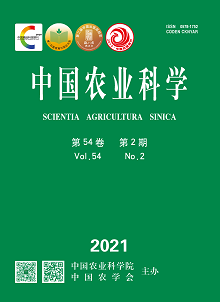【Objective】The objective of this study is to research the differences of the structure and functional diversity of fungal community in the rhizosphere soil of healthy and diseased potato plants, and to clarify the relationship between the structure of soil fungal community and the occurrence of verticillium wilt, so as to provide a theoretical basis for the final explanation of the causes of potato verticillium wilt and ecological control from the perspective of microbial ecology.【Method】The rhizosphere soil of healthy and diseased plants of verticillium wilt of potato was collected from Bashang area in Hebei Province. The number of ITS gene copies of Verticillium dahliae was determined by real-time quantitative PCR, and the structure of soil fungal communities was measured by high-throughput sequencing (Illumina MiSeq). The quantity of V. dahliae and the community of soil fungi were analyzed. The redundancy analysis (RDA) was used to determine the correlation between fungal community structure and soil nutrient. Meanwhile, the utilization capacity of rhizosphere soil microorganisms of healthy and diseased plants to carbon source was compared by Biolog-Eco plate method.【Result】The occurrence of verticillium wilt of potato was related to the ITS gene copy number of V. dahliae in soil. The ITS gene copy number of pathogens was high in rhizosphere soil of diseased plants, but not detected in healthy plants. Illumina MiSeq analysis showed that the diversity index of fungi in rhizosphere soil of diseased plants was lower than that of healthy plants, but the diversity difference was not significant. Compared with the rhizosphere soil of healthy plants, at phylum level, the relative abundance of Ascomycota and Mortierellomycota was increased by 20.68% and 16.16%, respectively, while that of Basidiomycota was decreased by 51.43%. At genus level, the average relative abundance of Verticillium, Penicillium, Vishniacozyma, Rhodotorula and Cladosporium in rhizosphere soil of diseased plants was increased by 71.96, 3.62, 6.11, 15.38 and 6.24 times, respectively, while that of Plectosaphaerella, Guehomyces, Stachybotrys, Gibberella, Aspergillus was decreased by 45.10%, 61.41%, 96.87%, 45.85% and 44.39%, respectively. RDA of fungal community composition and soil nutrient showed that the relative abundance of dominant communities in rhizosphere soil of healthy plants (such as Plectosaphaerella, Guehomyces, Grapevine, Gibberella and Aspergillus) was positively correlated with nitrate nitrogen (NO3 --N), organic matter (OM) and pH, while the relative abundance of dominant communities in rhizosphere soil of diseased plants (such as Verticillium, Alternaria, Colletotrichum, Mortierella, Humicola, Penicillium, Vishniacozyma, Rhodotorula and Cladosporium) was positively correlated with inorganic phosphorus (IP) and available phosphorus (AP). The AWCD values of rhizosphere soil of healthy and diseased plants indicated that the utilization ability of microorganisms to carbon source in rhizosphere soil of diseased plants was higher than that of healthy plants. Further analysis showed that, compared with the healthy plants, the utilization ability of rhizosphere soil microorganisms to carboxylic acids carbon source was significantly improved, while the utilization ability to amino acids, amines, carbohydrates, polymers and miscellaneous was not significantly different.【Conclusion】The decrease of fungal diversity and the change of community structure in rhizosphere soil of healthy and diseased plants are the important characteristics of potato verticillium wilt. The significant increase of relative abundance of Verticillium is the most important characteristic, and the structure of fungal community is affected by soil nutrient. At the same time, the utilization of carboxylic acids carbon source is significantly increased by rhizosphere soil microorganisms of diseased plants.









